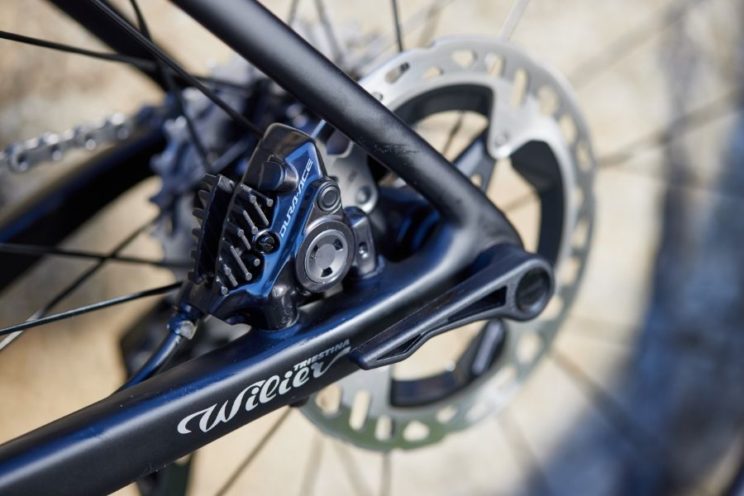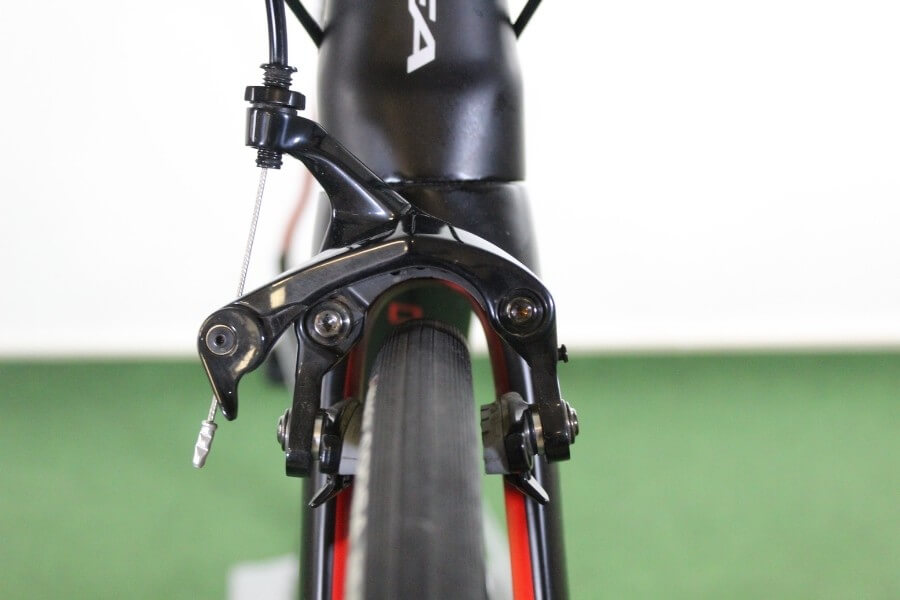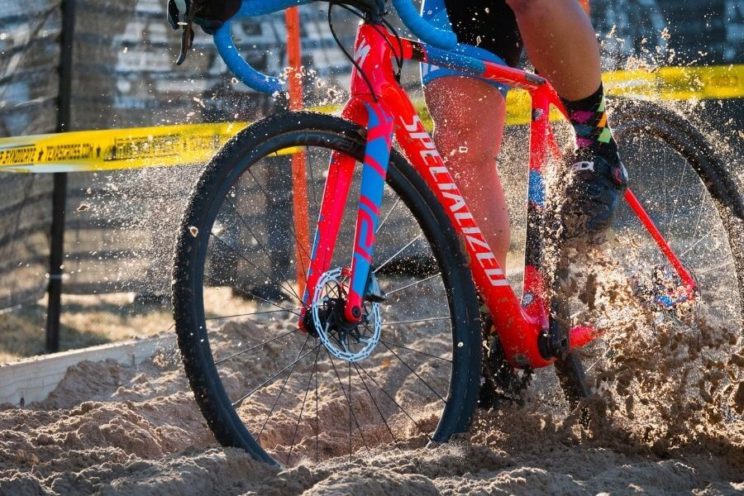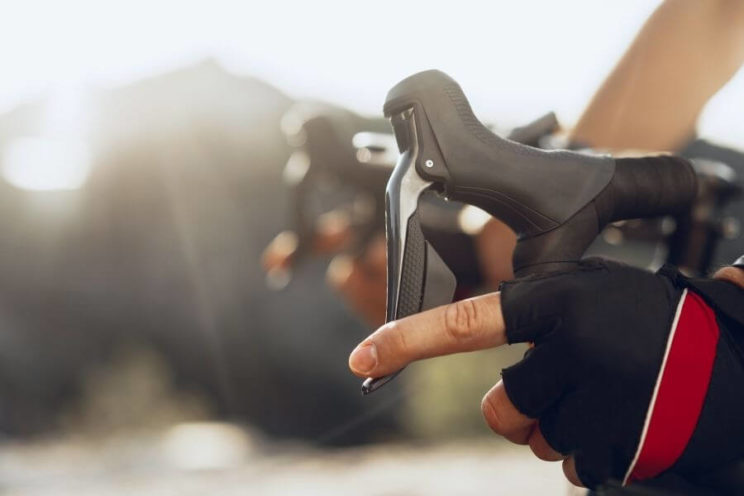Disc brakes have extended rapidly in road cycling. The vast majority of professional squad bicycles already assemble them, reporting benefits for the power and modulation of braking, as well as their greater efficacy and safety in rain conditions.
But is there still an alternative to discs? Is it worth buying a bicycle with bridge or zapata brakes? In this article we answer these and other issues, with an approach aimed mainly to the amateur cyclist who doubts which braking system should have his next route bicycle.
Advantages of discs that do not have shoes
[Captation Id = "Attachment_8231" Align = "Alignnone" Width = "744"]

Image: Shimano Dura-Ace Flat Mount System.[/caption]
The
main advances that the albums brought For bicycle braking they can be summarized in two: modulation of the braking itself and wet efficacy. The first refers to the bicycle does not stop abruptly, even more so if the braking system is hydraulic (brake fluid) and non -mechanical (tensioned cable). A very useful quality when controlling the bicycle in descent with a strong slope, for example.
As for the second advance, the album solves the problem of wet braking, especially if it is hydraulic. In a shoe brake the braking track gets wet and the efficiency decreases, turning the most uncontrolled and less powerful bike and requiring greater expertise in handling.
Advantages of shoes that do not have discs

But these two great advantages of disc brakes on shoe brakes for a road bike are not determining to retire the latter. He currently wins the album in the series assemblies. But both systems coexist perfectly and it cannot be said that classic brakes are obsolete.
They are not for two simple reasons (the first one is even more important than the second): weight and maintenance. The first factor is capital for road performance, not so much in mountain cycling. Therefore, in this modality its implementation has been much slower and has had more detractors. The disc brake system is heavier. The increase is generally encrypted between 200 and 500 grams. A significant increase that ends up noticing when rolling and that to compete can make a difference.
A model with Zapata brakes is still a very attractive light bicycle option
In the maintenance chapter the bridge brake or zapata continues to win the game. It is, in addition to more affordable if the entire kit is purchased (or the components separately), less expensive than maintaining in the short and medium term. It does not need to purged the circuit such as hydraulics every year. With a simple periodic review of the tension or the status of the shoes is sufficient in many cases. In addition, for a beginner cyclist or little accustomed to mechanics are easier to maintain or adjust at home.
Integration and aerodynamics: the undervalued virtue of the discs
[Captation Id = "Attachment_6516" Align = "Alignnone" Width = "744"]

(Image: Logan Deborde - Unsplash)[/caption]
Aerodynamics is one of the factors that the bulk of amateur cyclists barely values in disc brakes, but ends up being very important in performance issues. Several aerodynamic studies of the brands in the wind tunnel, such as those of
CervéloThey have shown that disk brake assembly ends up providing aerodynamic gains to the bicycle that compensate for their own system weight gain.
This is achieved, above all, by dispensing with the front brake bridge, which hinders the frontal air flow (the one that produces the greatest resistance). At the same time, the discs allow manufacturers to rout the most effective cables. It is demonstrated and corroborated that cleaning the bicycle box grants aerodynamic benefits that have an impact on the increase in the watts and the improvement of the average speed.
Is it worth buying a bicycle with Zapata brakes?

Thus, view the main advantages and properties of disc brakes and Zapata is time to answer the question we ask in this article. If we have to give a quick answer we have to say yes, it is still worth buying a bicycle with Zapata brakes. But this answer needs some development.
It is worth it and depends, like many other aspects of cycling, the cyclist profile that you are, level, type of route, bicycle you use and budget. If you are a novel cyclist that comes out from time to time for simple tours, your purchase will probably be a bicycle with shoe brakes: cheaper, simpler to maintain and with sufficient braking power to roll safely.
If you are a beginner cyclist, a bicycle with shoe brakes should be your priority option
On the other hand, if you have experience in road cycling, you like to upload ports (and lower them) and prioritize performance on any other issue, a bicycle with discs can be very interesting for you. At this point, however, there are some exceptions, marked by the greatest weight provided by the discs. If your fort is climbing and you take the descents calmly, your bike should be light and the discs add ballast.
Also, if you want to step on the competition and you have a good level of technique, choose to get a good bicycle with Zapata brakes, in which the rest of the components are not conditioned in quality by the discs. In addition to keeping under the weight, you will save even a few euros at the final price and also with subsequent maintenance.
 Image: Shimano Dura-Ace Flat Mount System.[/caption]
The main advances that the albums brought For bicycle braking they can be summarized in two: modulation of the braking itself and wet efficacy. The first refers to the bicycle does not stop abruptly, even more so if the braking system is hydraulic (brake fluid) and non -mechanical (tensioned cable). A very useful quality when controlling the bicycle in descent with a strong slope, for example.
As for the second advance, the album solves the problem of wet braking, especially if it is hydraulic. In a shoe brake the braking track gets wet and the efficiency decreases, turning the most uncontrolled and less powerful bike and requiring greater expertise in handling.
Image: Shimano Dura-Ace Flat Mount System.[/caption]
The main advances that the albums brought For bicycle braking they can be summarized in two: modulation of the braking itself and wet efficacy. The first refers to the bicycle does not stop abruptly, even more so if the braking system is hydraulic (brake fluid) and non -mechanical (tensioned cable). A very useful quality when controlling the bicycle in descent with a strong slope, for example.
As for the second advance, the album solves the problem of wet braking, especially if it is hydraulic. In a shoe brake the braking track gets wet and the efficiency decreases, turning the most uncontrolled and less powerful bike and requiring greater expertise in handling.
 But these two great advantages of disc brakes on shoe brakes for a road bike are not determining to retire the latter. He currently wins the album in the series assemblies. But both systems coexist perfectly and it cannot be said that classic brakes are obsolete.
They are not for two simple reasons (the first one is even more important than the second): weight and maintenance. The first factor is capital for road performance, not so much in mountain cycling. Therefore, in this modality its implementation has been much slower and has had more detractors. The disc brake system is heavier. The increase is generally encrypted between 200 and 500 grams. A significant increase that ends up noticing when rolling and that to compete can make a difference.
But these two great advantages of disc brakes on shoe brakes for a road bike are not determining to retire the latter. He currently wins the album in the series assemblies. But both systems coexist perfectly and it cannot be said that classic brakes are obsolete.
They are not for two simple reasons (the first one is even more important than the second): weight and maintenance. The first factor is capital for road performance, not so much in mountain cycling. Therefore, in this modality its implementation has been much slower and has had more detractors. The disc brake system is heavier. The increase is generally encrypted between 200 and 500 grams. A significant increase that ends up noticing when rolling and that to compete can make a difference.
 (Image: Logan Deborde - Unsplash)[/caption]
Aerodynamics is one of the factors that the bulk of amateur cyclists barely values in disc brakes, but ends up being very important in performance issues. Several aerodynamic studies of the brands in the wind tunnel, such as those of CervéloThey have shown that disk brake assembly ends up providing aerodynamic gains to the bicycle that compensate for their own system weight gain.
This is achieved, above all, by dispensing with the front brake bridge, which hinders the frontal air flow (the one that produces the greatest resistance). At the same time, the discs allow manufacturers to rout the most effective cables. It is demonstrated and corroborated that cleaning the bicycle box grants aerodynamic benefits that have an impact on the increase in the watts and the improvement of the average speed.
(Image: Logan Deborde - Unsplash)[/caption]
Aerodynamics is one of the factors that the bulk of amateur cyclists barely values in disc brakes, but ends up being very important in performance issues. Several aerodynamic studies of the brands in the wind tunnel, such as those of CervéloThey have shown that disk brake assembly ends up providing aerodynamic gains to the bicycle that compensate for their own system weight gain.
This is achieved, above all, by dispensing with the front brake bridge, which hinders the frontal air flow (the one that produces the greatest resistance). At the same time, the discs allow manufacturers to rout the most effective cables. It is demonstrated and corroborated that cleaning the bicycle box grants aerodynamic benefits that have an impact on the increase in the watts and the improvement of the average speed.
 Thus, view the main advantages and properties of disc brakes and Zapata is time to answer the question we ask in this article. If we have to give a quick answer we have to say yes, it is still worth buying a bicycle with Zapata brakes. But this answer needs some development.
It is worth it and depends, like many other aspects of cycling, the cyclist profile that you are, level, type of route, bicycle you use and budget. If you are a novel cyclist that comes out from time to time for simple tours, your purchase will probably be a bicycle with shoe brakes: cheaper, simpler to maintain and with sufficient braking power to roll safely.
Thus, view the main advantages and properties of disc brakes and Zapata is time to answer the question we ask in this article. If we have to give a quick answer we have to say yes, it is still worth buying a bicycle with Zapata brakes. But this answer needs some development.
It is worth it and depends, like many other aspects of cycling, the cyclist profile that you are, level, type of route, bicycle you use and budget. If you are a novel cyclist that comes out from time to time for simple tours, your purchase will probably be a bicycle with shoe brakes: cheaper, simpler to maintain and with sufficient braking power to roll safely.































